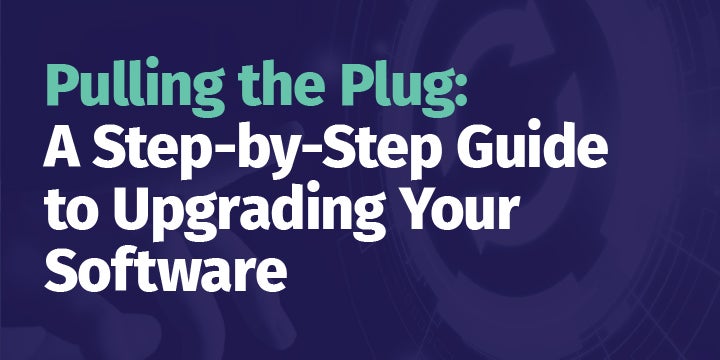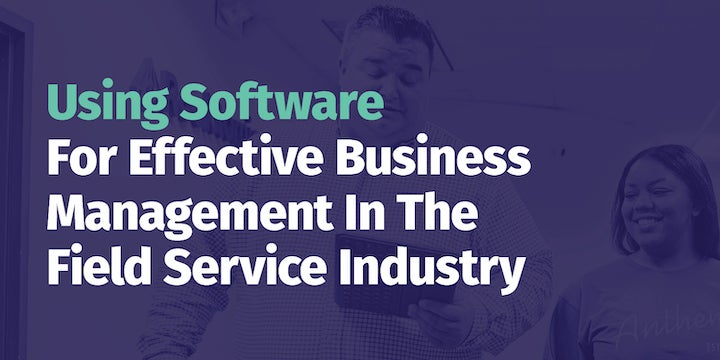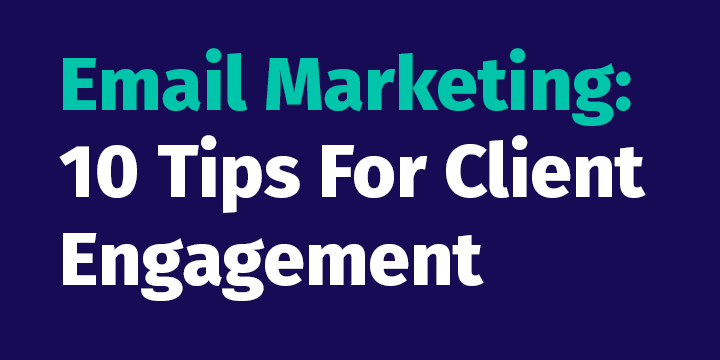Anatomy Of A Positive Review

Online reviews have a great influence not only in small purchases but also on huge investments. Whether it’s what restaurant you want to try for the night or what home you want to spend the rest of your life in, chances that an online review played some role in your decision.
As a business owner, online reviews can help or hinder your business to a startling degree. Customer reviews can be the deciding factor that attracts that perfect person who will remain a loyal customer for years—or the warning that pushes them away.
As the Internet evolves and businesses grow ever more tech-savvy, successfully maintaining your digital footprint has never been more important. This is especially true in the wake of COVID-19: so many people stuck inside naturally created an environment where they only had the Internet to turn to get their information because they couldn’t go out and ask.
For a business, it was always a plus to have great online review scores, but it was much more important that your reviews weren’t bad. Good reviews about your business were always a nice to have, but they’re quickly becoming essential. Now that people can access your entire business’s review history in seconds, it’s never been more important to ensure they like what they find.
In this guide, we’ll dissect an online review to its basic parts so we can then understand the role each element plays and the greater impact they have on your business.
Anatomy Of A Review
So what makes a positive review, and what parts go into it? Here are some key elements to be aware of:
Platform
The first thing to consider with any online review is the platform it resides on. While there are a couple of big-name commercial review sites out there like Yelp, Angie’s List, and hundreds of industry-specific sites, Google remains by far the most popular online review site.
The reason for this is simple—most people are already logged into their Google account. Also, Google makes it easy for customers to leave reviews quickly and move on. We’ll talk about why making the review process simple is so important later in this guide.
Google’s popularity also makes it arguably the most important. Other niche sites won’t have the same impact as a Google review. Plus, it will increase the likelihood of you showing up in search results in your area—sending anyone with search queries about your industry directly to you.
Lead
Why did your customer leave you a review? What called them to action?
Common strategies businesses use to spur customer engagement include:
Directly asking customers to leave reviews
Sending customers a follow-up text or email for a review
Customers are 12% more likely to leave a review if they see a sign asking them to, and 36% more likely to leave a review if they get an email or a text inviting them to.
Of course, you don’t always need to provide an invite to get a customer to leave a review. People leave unprompted reviews for service all the time; just keep in mind that most of the time this happens, they are leaving that review to talk about an experience they really loved or really hated. Most people that are simply satisfied don’t leave reviews—they simply move on. For your online reputation, it’s better to give a satisfied customer a nudge than it is to wait for that person to do it on their own.
Date
The date of a review can tell you a lot. If a business has lots of recent reviews, even with a few negative ones sprinkled in, it still looks better than one with great reviews but no recent activity. If the last review was left three years ago, it doesn’t tell a potential customer what they can expect today.
Distance
When you make a Google search for a local business, included in the review results is the physical distance to the business from wherever you’re searching. Physical proximity to the user at the time of search is a piece of the puzzle search engines will use to rank listings comparatively. Everything else equal, customers are most likely to go to the closest business that provides the product or service they’re looking for.
Rating
The core of the review is the rating itself. While rating scales vary on individual websites, the five-star rating system that Google and Yelp use has become industry standard. The more stars, the better the business—according to reviewers, anyway. Businesses with ratings at or above a four are considered the best in the area, while businesses with scores in the one to two range are to be avoided.
Review Content
Most commercial review sites include a comment section where customers can go into detail about the rationale behind their review. Why did the customer leave the score they did? If it’s a great score, the answer is that your business met or exceeded all of their criteria—you did everything right.
For a negative review, the rationale behind the low rating can be much more difficult to understand. Sometimes your business genuinely needs improvement, and sometimes people just don’t like you. Some of the most common reasons people leave negative reviews are due to lack of satisfaction with the product or service and unethical business practices. However, according to Podium, employee attitude is the most likely motivation that causes customers to leave a one-star rating—but also the most likely reason for a five-star rating.
It’s important to keep in mind that far more people are reading reviews online than they are creating reviews of their own. The majority of people that interact with a business never leave a review. In years past, this process hasn’t always been easy.
If you had to jump through hoops to leave a review, only the most satisfied or most disgusted customers would take the time to write out their experience. Now, anyone can leave a Google review with the click of a button, and with a reasonable expectation that it will be seen by others in the area.
Review Response
Once the customer has pressed “Submit Review,” the ball is now in your court. How should you respond? If you want to be successful, the answer is: carefully. Responding to a positive review can show a satisfied customer that you’re engaged with them, helping establish rapport and foster repeat business. On the other hand, responding callously to a negative review can be the final straw for a fed-up customer. Responding in an appropriate way to a negative review can help show prospective customers how respectful they can expect to be treated if they were to have a similar experience.
Crafting a good response to a review can be a saving grace for your client relationship. According to Podium’s 2021 State of Online Reviews, about 56% of consumers say that seeing a business’s response to a review has changed their perspective on the business—for better or for worse. In the wake of COVID-19, 49% of Podium responders said that they use reviews to check the business’s safety practices.
Why Are Reviews Important
No matter the industry you’re in, online reviews are increasingly important to how you do business. People no longer have to go into purchases blindly, so why would they?
We use reviews more than ever to make purchasing decisions. Positive reviews give your brand a solid reputation to both prospective customers and to web crawlers that can get you picked up in a user’s search. Likewise, negative reviews continue to drive away a bigger and bigger percentage of customers—and clicks.
Beyond the business aspect, user reviews give your brand a personal touch. When people read a review of your business, they can identify with whatever problem the reviewer is facing. If they couldn’t, they wouldn’t be researching your business in the first place. Readers can identify with the reviewer and sympathize with their success or failure.
According to Podium’s 2021 State of Reviews, online reviews continue to play an increasingly important role in how the average consumer views and interacts with businesses. Podium surveyed 1,543 people about their reviewing habits and their opinions about online reviews that included some very interesting insights, such as:
When polled, 88% of consumers said that online reviews played some part in how they discovered new businesses. 66% indicated that reviews played a moderate or large role.
While location, price, and personal reviews were the three most important factors that went into purchasing decisions, reviews were a close fourth.
In spite of this ranking, it is worth noting that over half of those surveyed indicated that they would be willing to travel farther to shop at a business, and 47% said they would be willing to pay more at a business with higher reviews.
38% said they would not engage with a business that had less than a four-star average rating, and 91% responded that they wouldn’t engage with a two or one-star rated business.
83% also reported that reviews needed to be recent and relevant for them to care. People don’t want to know how great you were. They want to know what you can do for them now.
However, people are also more understanding. In the wake of COVID-19, 45% of those surveyed said they would be less likely to leave a negative online review for a business when they otherwise would have. This is because they understand that recent events have presented many businesses with operating challenges outside of their control.
A growing percentage (79%) of local businesses report that they will be more proactive with their online reputation, meaning competition will only get fiercer with time.
How To Make Reviews Work for You
So what does all this mean, and how can you use this knowledge to your advantage? The basic things to remember are:
People are reading more reviews than ever before, and those reviews have a significant impact on how they make everyday purchases.
It’s not enough to get a five-star review every now and then. You have to do it over and over again, with consistently good reviews that are relevant to the customers you’re trying to reach.
So, how can you make reviews work for you? Here are some pointers:
Make The Review Process As Painless As Possible
Getting customers to review your business is the first challenge. Most people leave business reviews four times or less every year. Even customers that have been prompted to review their experience often won’t unless their experience was one extreme or the other. If they felt service was simply adequate, they’re not likely to go to great lengths to defend or praise the business.
It’s important to make the process as streamlined as possible. Ask customers to leave reviews while their positive experience is fresh in their minds.
Remember all of the elements that make up a review. The way to capitalize on all of them is by getting as many recent and relevant reviews as possible. To do so, you have to encourage your customers to leave reviews and make it as easy as possible for them to do so. Use smartphone and tablet accessibility to your advantage wherever possible.
Keep The Reviews Rolling In
Once you’ve found a successful way to drive reviews, don’t let up. It’s not enough to just be good—you have to be popular as well. Quantity is as important as quality, but so are recency and consistency. A company with only five-star reviews won’t compete with a company that has a 4.3 built over thousands of reviews.
Feature Great Reviews Prominently
When customers have a positive interaction with your brand, that’s a great thing to broadcast to the world. Let customers know you value their input while simultaneously showcasing their praise. One great way to accomplish this is to feature several glowing, positive reviews on social media. Consider creating custom graphics that include the review, the source of the review, and if the review mentions a specific employee by name, feature them! This is a great morale booster for your technician as well. Positive reviews could be the difference that pushes your next potential customer to buy now!
Create A Positive Employee Experience
Most reviews are from people who either had a great experience or a terrible one. The way your employees interact with customers is the leading factor in causing them to either love or hate your business. So, make sure your team leaves a positive lasting impression by training them to be polite and respectful at all times. Simple things like eye contact, body language, and a friendly smile, can all add up. One simple tactic is to simply thank the customer for their business. Also, it never hurts to offer bonuses to technicians who routinely get top marks from customers.
Respond - Tastefully
The advent of social media has allowed businesses to interact with people in a way never before possible. With that in mind, direct communication has never been more important. Responding appropriately to a review is a great way to push a great review further or potentially patch up your relationship with a disgruntled customer.
When you respond to reviews, do so tactfully and always with the intent of helping the customer solve whatever problem they were facing. Stick up for yourself if you have to, but own up to mistakes. Don’t be afraid to respond to positive feedback in kind, but be cautious when responding to negative reviews.
Be Proactive
Be proactive about your reputation online. As the online marketplace continues to grow more competitive for local businesses, now is the time to ensure you create and maintain the best reputation possible.
Don’t just wait for them to leave you a review: ask customers and make the process as easy and streamlined as possible. Use positive reviews as a form of advocacy and use negative reviews as a learning experience.
You cannot remove reviews from Google. From time to time, Google themselves will remove reviews if they are identified as fake, solicited, or inaccurate. Sources like FieldRoutes allow the filtering of reviews in order to present only positive reviews on a website, but unfortunately play no part in how a Google Business Profile ranks, which is the majority intent for reviews. Review generation should be organic (i.e. a company does a good job, simply asks for a review, and a customer leaves it.) and should not be solicited for a rewards or exchange of any money/product etc.
The best way to manage your digital footprint is with the help of a professional marketing agency.
Your Partner In Growth
If you want to drive more customer reviews, the first step is to get more customers. Marketing is what gets your perfect customer there in the first place.
At FieldRoutes, our expert team of writers and web developers can start you off on the right foot with streamlined websites and marketing services built to get you in front of your best potential customers. We specialize in helping great businesses find great customers for their services. Make the most out of your online reviews with help from FieldRoutes!
Call for a Demo at 207.492.4235
Join the number of thriving businesses using FieldRoutes to acquire new customers while lowering their customer acquisition costs, improve automation, and crush the competition.





